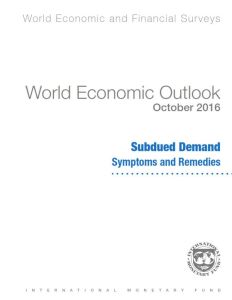Join getAbstract to access the summary!

Join getAbstract to access the summary!
International Monetary Fund
World Economic Outlook October 2016
Subdued Demand. Symptoms and Remedies
IMF, 2016
What's inside?
Global economic growth, trade and deflation concern international policy makers.
Recommendation
The world economy continued to stumble in 2016, years removed from the global financial crisis and the Great Recession. The impacts of slow GDP growth, persistent deflationary environments, China’s conversion to a consumer economy and weakening trade growth vex policy officials. Uncertainties associated with the Brexit vote and the incoming US presidential administration cloud these dynamics. In this biannual review from the International Monetary Fund, experts describe economic conditions and delve into broad-based analyses of trade, deflation, China and migration. getAbstract recommends this authoritative and highly detailed report to executives and investors looking to steer a course through the global economic topography.
Summary
About the Author
The International Monetary Fund advises member nations on policy issues and works to promote economic stability and well-being.



































Comment on this summary